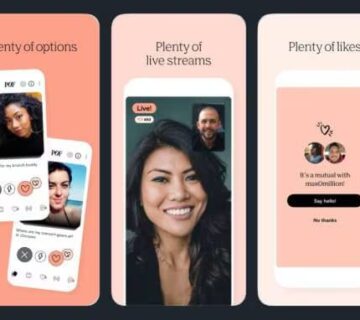In the crowded online dating market, eHarmony has remained a powerhouse for over two decades, largely due to its proprietary matching system designed around deep compatibility. Unlike many dating apps based on superficial swiping or casual browsing, eHarmony’s scientific approach focuses on pairing singles with high potential for lasting, meaningful relationships eHarmony Matching System Works in 2025.
This guide explains in detail how the eHarmony matching system works in 2025, what the compatibility scores mean, how the algorithm uses personality and behavior data, and why this system continues to be trusted by millions worldwide.
The Foundation: The Compatibility Matching System®
At the core of eHarmony’s success is its Compatibility Matching System®. Developed under the guidance of clinical psychologists, this system uses data collected via an extensive Compatibility Quiz and ongoing user behavior to deliver personalized match recommendations.
How the Compatibility Quiz Works
When users join eHarmony, they complete a detailed Compatibility Quiz consisting of approximately 70-80 questions. These questions cover broad aspects of identity and values, such as:
-
Personality traits (introversion/extroversion, openness, conscientiousness)
-
Emotional temperament and communication style
-
Social behavior and lifestyle preferences
-
Relationship skills and conflict resolution methods
-
Values and beliefs (family goals, spirituality, ambition)
-
Interests and hobbies
This questionnaire replaced an earlier, much longer version with about 150 questions to make it more user-friendly while retaining accuracy. The answers build a detailed Personality Profile that feeds directly into the matching algorithm.
The 32 Dimensions of Compatibility
eHarmony’s matching algorithm evaluates individuals across roughly 32 dimensions or areas of compatibility. These dimensions fall into categories like personality, social style, values, emotional intimacy, and lifestyle.
Some examples include:
-
Core Personality: Traits like assertiveness, generosity, pragmatism
-
Relationship Skills: Ability to handle conflict, emotional management
-
Emotional Intimacy: Comfort with vulnerability, affection styles
-
Values and Beliefs: Spirituality, ambition, family orientation
By comparing these facets in two people, eHarmony can predict potential harmony or conflict in relationships.
How Matches Are Selected and Scored
Once profiles are complete, the Compatibility Matching System calculates a compatibility score between 60 and 140 for each potential match. This score summarizes how well personalities and preferences align.
Scores Explained:
-
110 and above: Exceptional compatibility, highly recommended to pursue
-
100-109: Very strong match, compatible on core life values
-
80-99: Moderate compatibility, open to explore
-
60-79: Basic or superficial match, may have major differences
Members see these scores to help prioritize whom to message and learn more about their compatibility.
The Compatibility Report
Each match comes with a detailed compatibility report breaking down how you and the match compare across key dimensions. It highlights areas of shared traits and potential challenges, providing a great conversation starter and helping navigate early dating stages with more understanding.
Behavioral Data and Machine Learning
Beyond the quiz, eHarmony’s system also learns from user behavior on the platform:
-
Who you like or dislike
-
Types of profiles you interact with
-
Messaging patterns and responsiveness
This ongoing data helps refine match suggestions by identifying evolving preferences and “hidden” compatibility signals through machine learning techniques, improving suggestions as you use the platform more.
The Role of User Preferences and Filters
While compatibility is the primary driver, eHarmony allows users to specify preferences such as:
-
Age range
-
Distance from location
-
Smoking and drinking habits
-
Religious beliefs (Premium feature)
These filters help surface potential matches that meet basic deal breakers or preferences without overriding the core compatibility matching.
Why eHarmony’s Matching System Works
-
Evidence-Based: Built on decades of psychology research.
-
More than Surface-Level: Focuses on deep personality traits rather than just photos or hobbies.
-
Continuous Learning: Adapts through user interactions and feedback.
-
Detailed Insights: Compatibility reports help users understand relational dynamics rather than rely on guesswork.
Limitations and Considerations
While powerful, the system is not perfect. Chemistry or physical attraction can’t be fully quantified. Some users may find that certain intangible factors like humor or spontaneity matter more than an algorithm can capture. eHarmony encourages users to use compatibility scores as guidelines rather than hard rules.
How to Maximize the Use of eHarmony Matches
-
Answer the quiz honestly and thoughtfully to improve match accuracy.
-
Review compatibility reports fully to understand relationship dynamics.
-
Communicate openly with matches to test chemistry beyond the algorithm.
-
Update preferences and profile as your goals evolve.
High Authority Link
For full details and official explanations, visit eHarmony’s official page about their matching system:
eHarmony Compatibility System
Read More: How to Delete Your eHarmony Account in 2025: A Complete Guide
Conclusion
eHarmony matching system in 2025 remains one of the most sophisticated and scientifically grounded methods in online dating. By combining comprehensive personality assessments with behavioral data and powerful algorithms, it provides singles with tailored matches aimed at lasting relationships. While no system can guarantee love, eHarmony’s approach significantly increases the odds of finding a compatible and fulfilling partnership.








[…] Read More: How eHarmony Matching System Works in 2025: A Comprehensive Guide […]